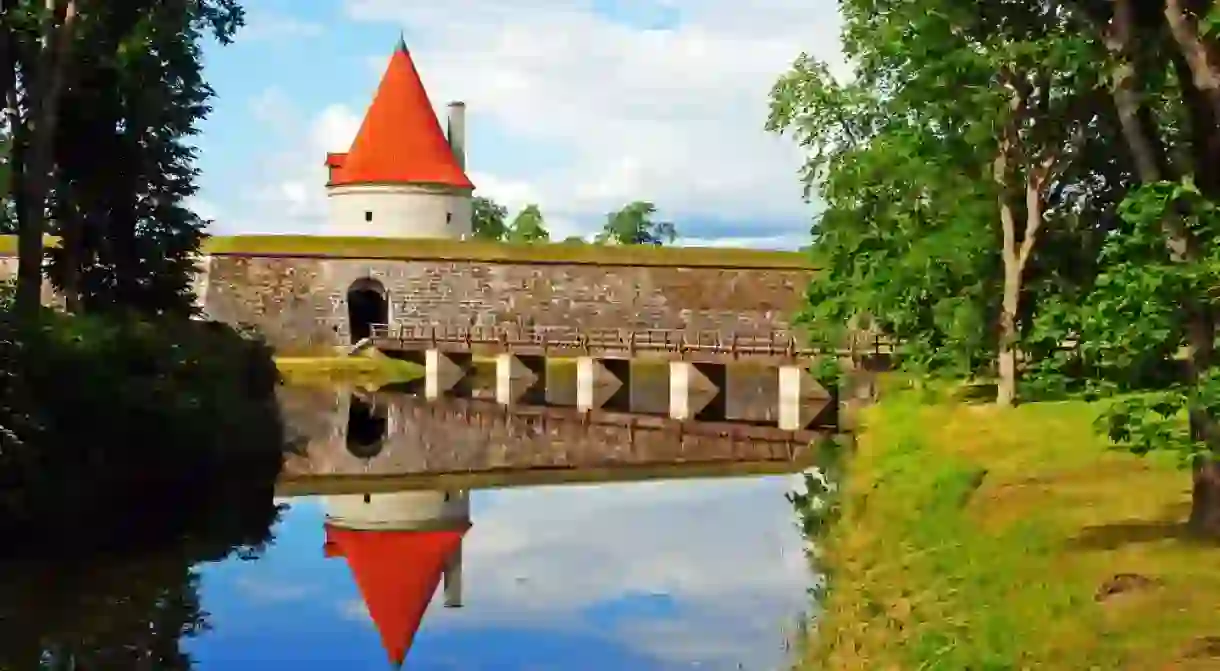The Top Things to See and Do on Saaremaa Island

Windswept beaches and quaint fishing villages attract outdoor adventurers to the largest island in Estonia. Discover the medieval Kuressaare Castle, ancient Kaali meteorite crater field and much more on your next trip to Saaremaa Island.
Before planning your next trip, check out the best bookable things to do in Estonia to make the most of your time exploring to the Saaremaa Island
Almost half-covered in forests and home to more spas than anywhere else in Estonia, Saaremaa Island is a hard-to-beat spot for a rejuvenating mini-break. Here’s our pick of the best things to do in Saaremaa, from dining in a 19th-century windmill to exploring its unspoiled landscapes by bicycle.
Visit Kuressaare Castle and Saaremaa Museum
Museum

Catch the sunset from Sorve Lighthouse
Architectural Landmark

There’s no better place on the island to watch the sun go down than at the Sorve Lighthouse. Erected in 1960, it is the tallest lighthouse in the Baltic Sea and occupies Saaremaa’s southernmost point. For a small fee, climb the 145 steps to the top and reward yourself with views all the way to Latvia from its high vantage point. Surrounded by white sand beaches and wide-open skies, it’s a particularly photogenic spot.
Eat local delicacies at Saaremaa Veski
Restaurant, Estonian
Once a 19th-century working windmill, Saaremaa Veski is now a popular restaurant. Tuck into local specialities such as cheese balls and wild boar tenderloin, all served on tables set amid the building’s original machinery. During the summer months, kick back in the garden decked with stone tables and comfy beanbags whilst the third-floor terrace is the place to enjoy spectacular views of Kuressaare.
Cycle across the island
Building
Saaremaa’s flat roads and low traffic density make it an ideal cycling destination. Rent a bike from Saaremaa Day Tours, situated next to Restaurant Ku Ku in central Kuressaare. Explore the cycling trails around the city or, alternatively, take any of the main roads leaving the city to the west, north or east. In the north of the island, a popular coastal route starts in Kihelkonna and runs for around 65km (40mi) to Leisi.
Explore the Kaali Meteorite Crater Field
Natural Feature

The world’s eighth youngest giant crater site is situated a 15-minute drive from Kuressaare. Around 7,500 years ago, an earthbound meteorite broke into several pieces just above this hallowed area. The largest fragment created a 110m (361ft) wide and 22m (72ft) deep crater. During the first century CE, it was believed to have been used for sacrificial rituals by the island’s inhabitants. Today it’s filled with water, but you can still stroll around its edge.
Cross the causeway to Muhu Island
Natural Feature, Architectural Landmark
Estonia’s third-largest island is connected to Saaremaa by a causeway as well as a regular ferry service to the mainland. Its lush landscapes, thatched cottages and traditional costumes have remained unchanged for centuries, earning it a nickname as “the place where time rests”. Key attractions include the open-air museum in Koguva village, the 13th-century Saint Catherine’s Church and Alexander restaurant at the five-star Padaste resort, one of Estonia’s finest eateries.
Go birdwatching in the Vilsandi National Park
Park
Climb Angla Windmill Hill
Natural Feature, Hiking Trail

Pack a picnic before heading to Angla Hill, where you’ll see the only remaining windmills on Saaremaa. The hilltop attraction consists of four trestle windmills dating from the early 19th century. Kids will appreciate the farm animals in a mini-zoo, plus there’s a souvenir shop and a museum dedicated to local folklore. Enjoy your picnic on one of the wooden tables scattered outside, or head to the cafe to sample home-cooked regional dishes.
Soak in the Georg Ots Hotel spa
Spa Hotel
Saaremaa has more spas than any other destination in Estonia. One of its best can be found within Kuressaare’s four-star GOSPA Georg Ots Hotel, situated on the waterfront overlooking the castle and sea. Its wellness centre features nude Finnish and infrared saunas, a jacuzzi, hot and cold pools, plus treatments using the hotel’s own Kena products, developed from Saaremaa’s natural resources. Tailor your spa break by choosing from a menu of two-night, all-inclusive packages.













